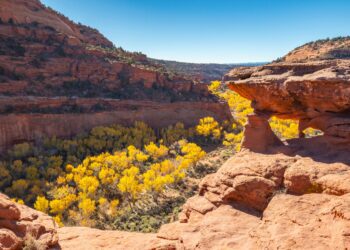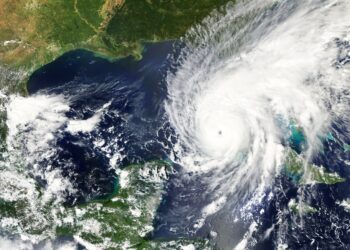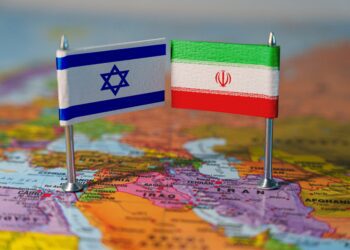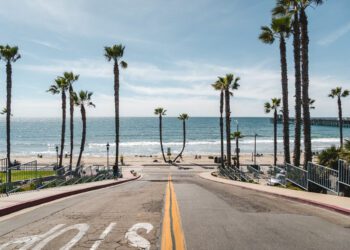They survived the BP oil disaster, Hurricane Katrina, and decades of industry spoiling their wetlands. Whatever their future holds, the people of Grand Bayou want to decide it for themselves.
Ten years ago, as news of the BP oil disaster reached Louisiana’s Grand Bayou Indian Village, Rosina Philippe dispatched her brother Maurice Phillips on a reconnaissance mission. Phillips pointed his flatboat toward the Gulf of Mexico and motored through a series of canals and inlets until he reached a fertile fishing ground called Bay Jimmy, eight miles from home. He returned with a passenger: a brown pelican, alive but slathered in petroleum.
Philippe and her brother belong to the Atakapa-Ishak/Chawasha Tribe. They live in their ancestral village, an hour’s drive south of New Orleans near the town of Port Sulphur. Most of the tribe’s estimated 400 members live elsewhere, but a remnant remains in Grand Bayou, a community that has shrunk over the years as its land has slowly slipped into the surrounding waters. The village consists of 14 homes and a nondenominational church. Surrounded by water, most of the buildings sit atop wooden pilings, and there are no roads to connect them. The houses line the bayou and can be reached only by boat.
For generations, the Atakapa-Ishak/Chawasha have relied on the fertility of the Mississippi River Delta. They catch seafood and forage for wild celery, green onions, and a leafy green called morelle noire. They used to forage for persimmons, too. They trapped muskrats, packing the meat in salt and preserving it in oak barrels. They hunted for deer and rabbits—and still hunt ducks—and grew vegetables in large backyard gardens. In recent decades, however, these resources have contracted. The tribe has withstood one environmental assault after another, standing its ground in a disappearing wetland.
As they scrambled to save the pelican (which they later turned over to a wildlife rescue center), Phillips told his sister that he saw other oiled birds but could wrangle only that one onto his boat. What’s more, Bay Jimmy was covered in thick, gooey crude. Nearly two months after the April 2010 disaster, then governor Bobby Jindal visited the same bay and declared that BP’s oil was “killing the marsh.”
The Deepwater Horizon explosion and resulting 87-day oil spill proved catastrophic for Grand Bayou. The community had just rebuilt after Hurricane Katrina, which devastated the area in 2005, and residents had returned in time for the 2010 commercial shrimping season. “A lot of guys, what little bit of cash they had, they invested into making repairs on their boats because they envisioned the seafood to come,” says Philippe, a tribal elder. The springtime waters brimmed with shrimp. “So, it was almost like the anticipation of Christmas morning.”
Except that Christmas never came. The oil spewing from BP’s open well about 5,000 feet below the Gulf’s surface shut down the nearby fisheries for months. Grand Bayou’s fleet remained docked long after officials insisted that Gulf seafood posed no health risk. The fishermen didn’t agree. “As long as they believed that it was unsafe to eat,” Philippe says, “they refused to go out and catch it, even though they were in dire straits financially.”
Now, with the 10th anniversary of the explosion approaching next week, the tribe is clear on two points. First, the BP disaster cannot be viewed in a vacuum. It is part of a litany of stresses that Grand Bayou has survived for decades, including the loss of more than 5,000 acres of fertile Delta land. And, second: They have no plans to leave.
“We’re resilient,” says Carmalita Sylve, who grew up in Grand Bayou, moved to Colorado after Hurricane Katrina, and returned to a rebuilt home in 2009. From the tribe’s mainland headquarters, she gestures outside toward a grass-lined bank where boats dock and neighbors come to fish. “It’s like this grass out here. You smoosh it down, but you know what? It will come right back. And that’s how we are. You think that you’re going to just overcome us with the different ways. But we’ll adapt.”
Fateful Omissions
The threats faced by the Atakapa-Ishak/Chawasha reflect, and amplify, what’s happening in vulnerable communities all along the Louisiana Gulf Coast. Since the 1930s, about 2,000 square miles—more than 10 times the land area of sprawling New Orleans—have disappeared from the state’s coastline. Grand Bayou lies outside the protection of the state’s levee system. It lies outside the planning loop, too: The tribe was not formally consulted when the state developed its most recent master plan for coastal restoration.
That $50 billion plan, published in 2017, is essentially a detailed wish list. At its core are large engineering projects like pipelines to pump sediment into degraded wetlands in order to elevate the land and restore the marshes. “What is in the plan is not necessarily funded,” says Stuart Brown, who oversees the plan’s development at the Louisiana Coastal Protection and Restoration Authority (CPRA). Rather, he says, it’s a “prioritization effort.”
The master plan also lays out risk-reduction strategies for communities facing increased flooding. Depending on the projected flood levels and the type of building, it recommends one of three alternatives: floodproofing, elevation, or “voluntary acquisition.”
Nothing in the plan explicitly calls for the tribe’s, or anyone’s, relocation. But neither does it offer resources or a long-term vision for Grand Bayou to remain an intact village as the surrounding wetlands continue to erode. Members of the Atakapa-Ishak/Chawasha say they feel a tacit, and sometimes explicit, pressure to plan a future elsewhere.
That pressure, elders say, fails to consider the tribe’s connection to the bayou. It is so ancient, so sacred, that any discussion of resettlement evokes comparisons to the Trail of Tears. Grand Bayou predates the oil companies and the levee builders; predates the refineries and borrow pits that line the nearby highway; predates Louisiana statehood. The prospect of leaving feels, to them, like cultural erasure.
Place Markers
Last year a group of scientists, public officials, lawyers, and coastal residents met in New York City at a conference organized by Columbia University’s Earth Institute to discuss “managed retreat,” an idea that has gained traction in planning circles. The notion is that life along certain coastlines has grown untenable and that orderly relocation is the logical solution.
A handful of U.S. communities have already confronted the decision. After the 1993 Mississippi River floods inundated Valmeyer, Illinois, residents voted to rebuild their town 1.5 miles to the east and 400 feet up a bluff. Shishmaref, Alaska, an Iñpuiat village on a barrier island that is eroding from melting permafrost and sea ice, is currently waiting on federal funds to move to the mainland. (According to PRI’s The World, climate-change denialism has held up the money.)
Closer to home, the planned resettlement of Louisiana’s Isle de Jean Charles Biloxi-Chitimacha-Choctaw Tribe, whose ancestral island has nearly disappeared, has been mired in a conflict over tribal sovereignty. The tribe’s leaders say they’re not being treated as co-collaborators—in fact, they learned about the state’s purchase of land for resettlement by reading a press release. State officials say they have tried to work with those leaders but are “not in a legal position” to acknowledge the sovereignty of a tribe that is not federally recognized.
Valmeyer, Shishmaref, and Isle de Jean Charles could be the vanguard of something bigger. The U.S. government’s 2018 National Climate Assessment envisioned the future relocation of “millions of people” as retreat from rising seas becomes an “unavoidable option.”
“That’s what the people in Miami are facing. That’s what I’m facing in New Orleans,” says Mark Davis, director of the Tulane Institute on Water Resources Law and Policy. Climate change, he says, will make some places uninhabitable, even if residents want to stay. “Sooner or later, they are going to be dealt a hand they cannot play.”
Among those attending the Columbia conference were representatives of four Louisiana tribes, who spoke together on a panel. Rosina Philippe was among them. Fewer phrases pique the Grand Bayou elder faster than “managed retreat.” Given the arc of U.S. history, she worries that it’s the rebranding of an old policy: making life-altering decisions about communities without their participation or consent.
“They’re couching it in such agreeable terms. ‘Managed retreat.’ Well, managed by whom?” Philippe asks. “We’ve seen so many instances of other people looking at indigenous populations and deciding they should go there, or they can’t go there, and thinking that they were doing the right thing. And we learn through the historic context that it was to the tribe’s detriment. But yet they continue to not learn from the past mistakes.”
To understand the depth of this sentiment, one must understand the value of place in Grand Bayou, where money is scarce but biological and social capital are ample. That sense of abundance stems from an era, within the memory of elders, when the village had dozens of households and looked very different.
“You see water back here, but all of this was ground,” says Carmalita Sylve.
“High ground,” says Philippe.
“You could walk probably just about almost to the Gulf of Mexico,” says Sylve.
By Barry Yeoman
Read the full article at https://www.nrdc.org/onearth/sea-level-rise-threatens-their-ancestral-village-louisiana-tribe-fights-stay-put.












